Functia De Nutritie. Digestia SI Absorbtia.
- 1.
Sistemul digestiv este alcatuit din organe la nivelul carora se realizeaza digestia alimentelor, transormarea lor in produsi absorbabili si eliminarea resturilor neabsorbite. sistemul digestiv este alcatuit din tubul digestiv si glandele anexe. Traiectul bolului alimentar in tubul digestiv este in ordine:
- A.
Cavitatea bucala,faringe, esofag, intestinn subtire, stomac, intestin gros
- B.
Cavitatea bucala,faringe, esofag,stomac, intestin subtire, intestin gros
- C.
Cavitatea bucala,faringe, esofag, intestinn gros, stomac,intestinn subtire
- D.
Cavitatea bucala,esofag, stomac, intestin subtire,faringe, intestin gros
Correct Answer
B. Cavitatea bucala,faringe, esofag,stomac, intestin subtire, intestin grosExplanation
The correct answer is "Cavitatea bucala,faringe, esofag,stomac, intestin subtire, intestin gros". This is the correct order of the digestive system, starting from the mouth (cavitatea bucala) where food enters, then moving to the pharynx (faringe), esophagus (esofag), stomach (stomac), small intestine (intestin subtire), and finally the large intestine (intestin gros). This order represents the path that food takes through the digestive system, with each organ playing a specific role in the digestion and absorption of nutrients.Rate this question:
-
- 2.
Glandele anexe ale tubului digestiv sunt:
- A.
Sicatul si pancreasul
- B.
Salivare, ficatul si pancreasul
- C.
Ficatul pancreasul si tiroida
- D.
Pancreasul, ficatul si rinichii
Correct Answer
B. Salivare, ficatul si pancreasulExplanation
The correct answer is "salivare, ficatul si pancreasul" (salivary glands, liver, and pancreas). These are the accessory glands of the digestive system that play important roles in the digestion and absorption of food. The salivary glands produce saliva, which contains enzymes that begin the breakdown of carbohydrates. The liver produces bile, which helps in the digestion and absorption of fats. The pancreas secretes digestive enzymes and hormones such as insulin and glucagon, which regulate blood sugar levels. Together, these glands contribute to the overall functioning of the digestive system.Rate this question:
-
- 3.
Tubul digestiv asigura aportul continuu de apa, rlectroliti si subsatante nutritive necesare organismului prin:
- A.
Deplasarea alimentelor
- B.
Secretia sucurilor digestive si digestia alimentelor
- C.
Absorbtia produsilor de digestie a apei si a electrolitilor
- D.
Toate cele trei variante anterioare
Correct Answer
D. Toate cele trei variante anterioareExplanation
The correct answer is "Toate cele trei variante anterioare" which means "All of the above options". This means that all three options mentioned (deplasarea alimentelor, secretia sucurilor digestive si digestia alimentelor, Absorbtia produsilor de digestie a apei si a electrolitilor) are correct and contribute to the continuous supply of water, electrolytes, and nutrients necessary for the body.Rate this question:
-
- 4.
Masticatia este un act reflex involuntar care se poate desfasura sub control voluntar. Reflexul masticator este coordonat de centri nervosi din trunchiul cerebral.Rolurile masticatie sunt:
- A.
Fragmentarea limentelor facilitand deglutitia si cresterea suprafetei de contact dintre alimente si enzimele digestive
- B.
Formarea, lubrifierea si imnuierea bolului alimentar
- C.
Asigura contactul cu receptorii gustativi si eliberarea subsatantelor odorante care vor stimula receptorii olfactivi initiind secretia gastrica
- D.
Toate variantele anterioare
Correct Answer
D. Toate variantele anterioareExplanation
The correct answer is "Toate variantele anterioare" because all of the previous statements are true. Mastication is an involuntary reflex that can also be controlled voluntarily. It is coordinated by nerve centers in the brainstem. The roles of mastication include fragmenting food, facilitating swallowing, increasing the surface area for contact with digestive enzymes, forming, lubricating, and moistening the food bolus, and stimulating taste and smell receptors to initiate gastric secretion. Therefore, all of the previous statements are correct.Rate this question:
-
- 5.
Activitatea secretorie a cavitatii bucale se datoreaza glandelor salivare. Zilnic se screta 800-1500 ml de salica care contine 99.5% apa si 0.5 %reziduu uscat. Principalii electroliti di saliva sunt: NA+, Cl-, HPO3(2-), Mg2+ si
- A.
Ba2+
- B.
Br-
- C.
Ca2+
- D.
Li+
Correct Answer
C. Ca2+Explanation
The correct answer is Ca2+. The explanation for this is that the question is asking about the main electrolytes in saliva, and Ca2+ is one of them. Saliva is secreted by the salivary glands and contains various electrolytes, including sodium (Na+), chloride (Cl-), phosphate (HPO3(2-)), magnesium (Mg2+), and calcium (Ca2+). Therefore, Ca2+ is the correct answer.Rate this question:
-
- 6.
Concentratia electrolitilor din saliva este mai mica decat cea din plasma sangvina cu exceptia:
- A.
Ca+2
- B.
Mg+
- C.
K+
- D.
Na+
Correct Answer
C. K+Explanation
The concentration of electrolytes in saliva is generally lower than that in blood plasma, except for potassium ions (K+).Rate this question:
-
- 7.
Esofagul are rolul principal de a transorta alimentele din faringe in stomac, Pentru a indeplini acest rol are 2 tipuri de miscari peristaltice ( PERISTÁLTIC, -Ă adj. Mișcări peristaltice = mișcări prin care esofagul, stomacul și intestinele se contractă, favorizând deglutiția și apoi digestia. [< fr. péristaltique, cf. gr. peri – împrejur, stellein – a comprima].) : primar si secundar. Peristaltismul primar este controlat de:
- A.
Sistemul nervos enteric
- B.
Maduva spinarii
- C.
Nervul vagal
- D.
Trunchiul cerebral
Correct Answer
C. Nervul vagalExplanation
The correct answer is "Nervul vagal" because the vagus nerve plays a crucial role in controlling the primary peristalsis of the esophagus. The vagus nerve is a part of the parasympathetic nervous system and innervates the smooth muscles of the esophagus, allowing it to contract and propel food towards the stomach. This nerve also helps in regulating other digestive functions such as gastric secretion and motility.Rate this question:
-
- 8.
In cadrul functiei digestive saliva incepe procesul de digestie chimica a amidonului preparat. Alfa amilaza produce digestia chimica a amidonului preparat care este hidrolizat in trepte pana la stadiul de : (aceasta enzima va fi inactivata de pH-ul itragastric scazut)
- A.
Rafinoza
- B.
Maltoza
- C.
Lactoza
- D.
Zaharoza
Correct Answer
B. MaltozaExplanation
The correct answer is Maltoza because the question states that the process of chemical digestion of prepared starch begins with saliva, and alpha amylase is responsible for this digestion. Alpha amylase breaks down the prepared starch into smaller molecules, including maltoza. The enzyme is then inactivated by the low pH of the stomach, indicating that the digestion process stops at the maltoza stage. Therefore, maltoza is the correct answer as it is the product of the initial digestion of prepared starch.Rate this question:
-
- 9.
Which one do you like?
- A.
Option 1
- B.
Option 2
- C.
Option 3
- D.
Option 4
Correct Answer
A. Option 1 -
- 10.
Deglutitia cuprinde totalitatea activitatilor motorii care asigura transportul bolului alimentar din cavitatea bucala in stomac. Este un act reflex ce se desfasoara in 3 timpi: timpul bucal, timpul faringian si timpul esofagian. In timpul faringian bolul stimuleaza ariile receptoare din jurul intrarii in faringe. Impulsurile de la acest nivel ajung la:
- A.
Encefal
- B.
Maduva spinarii.
- C.
Hipotalamus.
- D.
Trunchiul cerebral.
Correct Answer
D. Trunchiul cerebral.Explanation
During the pharyngeal phase of deglutition, the bolus of food stimulates the receptors around the entrance of the pharynx. The impulses from these receptors are then transmitted to the brain for processing and coordination of the swallowing reflex. The brain structures involved in this process include the brainstem, specifically the medulla oblongata and pons, which together form the trunck cerebral. Therefore, the correct answer is trunchiul cerebral.Rate this question:
-
- 11.
Pe masura ce unda peristaltica se deplaseaza catre stomac, o unda de relaxare transmisa prin neuroni mienterici inhibitori catre stomac face ca acesta si chiar esfoagul inferior sa se relaxeze pregatind cavitatile respective pentru primirea alimentelor. Neuronii mienterici inhibitori fac parte din:
- A.
Nervi spinali
- B.
Sistemul nervos enteric
- C.
Nervul vag
- D.
Nervul vestibulocohlear
Correct Answer
B. Sistemul nervos entericExplanation
As the peristaltic wave moves towards the stomach, a relaxation wave transmitted through inhibitory myenteric neurons to the stomach causes it, and even the lower esophagus, to relax, preparing the respective cavities to receive food. Inhibitory myenteric neurons are part of the enteric nervous system, which is responsible for controlling the gastrointestinal tract's functions. Therefore, the correct answer is the enteric nervous system.Rate this question:
-
- 12.
Chimul gastric este:
- A.
O enzime secretata de stomac
- B.
O secretie a duodenului
- C.
Bolul alimentar
- D.
Bolul alimentar tranformat in stomac ca urmare a activitatii motorii si secretorii ale acestuia
Correct Answer
D. Bolul alimentar tranformat in stomac ca urmare a activitatii motorii si secretorii ale acestuiaExplanation
The correct answer is "Bolul alimentar tranformat in stomac ca urmare a activitatii motorii si secretorii ale acestuia." This means that the gastric chyme refers to the food bolus that has been transformed in the stomach due to its motor and secretory activities.Rate this question:
-
- 13.
Activitatea motorie a stomacului (motilitatea gastrica) realizeaza stocarea alimentelor,amestecul acestora cu secretiile gastrice cat si eliminarea continutului gastric in duoden. Ea reprezinta:
- A.
Partea motorie a unui arc reflex
- B.
Retropulsia si peristaltismul stomaului
- C.
Miscari peristaltice ale stomacului controlate de acetilcolina si gastrina
- D.
Retropulsia stomacului
Correct Answer
B. Retropulsia si peristaltismul stomauluiExplanation
The correct answer is "Retropulsia si peristaltismul stomaului" because it refers to the motor activity of the stomach, which includes both retropulsion (the backward movement of food) and peristalsis (the wave-like contractions that propel food through the digestive system). These movements are controlled by the neurotransmitter acetylcholine and the hormone gastrin.Rate this question:
-
- 14.
Cantitatea secretata zilnic de stomac este de 2 litri. Secretia stmacului este un lichid incolor cu pH ul cuprins intre 1 si 2.5. Contine apa, sunstante organice si anorganice in proportie:
- A.
99, 0.5,0.5 %
- B.
99, 0.6, 0.4 %
- C.
96, 2, 2 %
- D.
99, 0.3,0.7 %
Correct Answer
B. 99, 0.6, 0.4 %Explanation
The correct answer is 99, 0.6, 0.4%. This means that the stomach secretion is composed of 99% water, 0.6% organic substances, and 0.4% inorganic substances.Rate this question:
-
- 15.
Celulele pilorice ale stomaculu secreta:
- A.
HCl si mucus
- B.
Pepsinogen si mucus
- C.
HCl
- D.
Gastrina si mucus
Correct Answer
D. Gastrina si mucusExplanation
The correct answer is "gastrina si mucus". Gastrina is a hormone secreted by the pyloric cells of the stomach. It stimulates the secretion of gastric acid (HCl) and also helps in the production of mucus. Therefore, the pyloric cells secrete both gastrina and mucus.Rate this question:
-
- 16.
Acidul clorhidric este necesar pentru digestia proteinelor, asigurarea unui pH optim pentru actiunea pepsinei, activarea pepsinogenului, oxidatea Fe2+ (neabsorbabil) la Fe3+ (absorbabil) impiedicarea prolierarii intragastrice a unor bacterii patogene. Inhibarea secretiei de HCl se datoreaza:
- A.
Acetilcolinei
- B.
Somatostatinei
- C.
Gastrinei
- D.
Secretinei
Correct Answer
B. SomatostatineiExplanation
The correct answer is somatostatinei. Somatostatin is a hormone that inhibits the secretion of various substances in the digestive system, including gastric acid. It acts by suppressing the release of other hormones such as gastrin, which stimulates gastric acid secretion. Therefore, inhibiting the secretion of HCl can be attributed to somatostatin's inhibitory effect on gastric acid production.Rate this question:
-
- 17.
Secretiile stomacului sunt: pepsinogenul, labfermentul (la sugari), lipaza gastrica, gelatinaza si mucusul. Proteinele ingerate sub forma de emulsie sunt separate in acizi grasi si glicerol de catre:
- A.
Gelatinaza
- B.
Labfermentul
- C.
Lipaza gastrica
- D.
Pepsina
Correct Answer
C. Lipaza gastricaExplanation
Lipaza gastrica este responsabilă pentru descompunerea proteinelor ingerate sub forma de emulsie în acizi grași și glicerol. Aceasta este o enzimă secretată de stomac și are un rol important în digestia și absorbția grăsimilor din alimente.Rate this question:
-
- 18.
La nivel gastric are loc absorbtia in cantitati extrem de mici a unor substante precum cele foarte solubile in lipide etanol si apa cum ar fi: sodiu, potasiu glucoza si
- A.
Fier
- B.
Magneziu
- C.
Aminoacizi
- D.
Natrium
Correct Answer
C. AminoaciziExplanation
The correct answer is aminoacizi. At the gastric level, absorption occurs in very small quantities of substances that are highly soluble in lipids, ethanol, and water, such as sodium, potassium, glucose, and amino acids.Rate this question:
-
- 19.
Miscarile la nivelul intestinului subtire sunt contractii de amestec si contractii propulsive. Contractile de amestec fragmenteaza chimul determinand amestecarea progresiva a particulelor alimentare solide cu secretiile din intestinul subtire. Frecventa de fragmentare este:
- A.
9-10 ori pe minut
- B.
6-8 ori pe minut
- C.
8-12 ori pe minut
- D.
5 pe minut
Correct Answer
C. 8-12 ori pe minutExplanation
The correct answer is "8-12 ori pe minut". The explanation is that the movements in the small intestine consist of mixing contractions and propulsive contractions. Mixing contractions fragment the chyme, allowing for progressive mixing of solid food particles with secretions in the small intestine. The frequency of these contractions is 8-12 times per minute.Rate this question:
-
- 20.
Pancreasul contine celule endocrine, exocrine si ductale. Celulele exocrine organizate in acini (acín sn [At: DEX2 / Pl: ~e / E: fr aciunus] Mică dilatație, în formă de boabă de strugure, a capătului terminal al unei glande sau al unei bronhiole.) produc 4 tipuri de enzime: peptidaze, lipaze, amilaze si nucleaze care ajuta la digestia proteinelor, lipidelor, glucozelor si acizilor nucleici. Pentru neutralizarea aciditatii gastrice, celulele ductale secreta suc pancreatic (care contine HCO3+)zilnic in cantitate:
- A.
1400-1700 ml
- B.
900-1200 ml
- C.
1200-1500 ml
- D.
1100-1200 ml
Correct Answer
C. 1200-1500 mlExplanation
The pancreas contains exocrine, endocrine, and ductal cells. The exocrine cells, organized in acini, produce 4 types of enzymes (peptidases, lipases, amylases, and nucleases) that aid in the digestion of proteins, lipids, carbohydrates, and nucleic acids. The ductal cells secrete pancreatic juice, which contains HCO3+ to neutralize gastric acidity. The daily quantity of pancreatic juice secreted is estimated to be between 1200-1500 ml.Rate this question:
-
- 21.
Electrolitii secretati de pancreas sunt : Na+, k+ si HCO3-(secretat de celulele ductale). Elctrolitul al carei concentratie este mult mai mare decat in plasma este:
- A.
Na+ (Ionii de sodiu au o mare importanță în procesele fiziologice din organism, în depolarizarea membranelor, și în transmiterea stimulilor. Contrar tendinței de difuzie, pompa de sodiu-potasiu scoate ioni Na+ din celulă și introduce ioni K+, polarizând membranele (datorită diferențelor de concentrație de Na și K față de fețele membranei), pozitiv la interior și negativ la exterior. În timpul depolarizării, sodiul pătrunde masiv în celula și potasiul iese, schimbând polarizarea membranei.
- B.
K+(Cationii de potasiu sunt importanți în funcționarea neuronilor<sup id="cite_ref-64" style="color: rgb(68, 68, 68);">[64] (creier și nervi) și influențarea echilibrului osmotic dintre celule <sup id="cite_ref-65" style="color: rgb(68, 68, 68);">[65] și lichidul interstițial, cu o distribuție imediată în toate animalele (însă nu în toate plantele, de exemplu algele<sup id="cite_ref-66" style="color: rgb(68, 68, 68);">[66]) de către așa-numita pompa de Na+/K+-ATP.<sup id="cite_ref-67" style="color: rgb(68, 68, 68);">[67] Potasiul poate fi detectat gustativ deoarece provoacă trei dintre cele cinci senzații gustative, în funcție de concentrație. Soluțiile diluate ale ionului de potasiu au un gust dulce<sup id="cite_ref-autogenerated10_68-0">[68] (permițând concentrații moderate în lapte și sucuri), în timp ce concentrațiile mai mari devin acre<sup id="cite_ref-autogenerated10_68-1">[68], și la final conferă un gust sărat<sup id="cite_ref-autogenerated10_68-2">[68]. Combinația dintre amar și sărat de către suplimentarea prin ingestie a lichidelor cu conținut ridicat de potasiu reprezintă o provocare palatabilă
- C.
HCO3- (Anionul bicarbonat sau carbonat acid (cu denumirea IUPAC recomandată de hidrogenocarbonat)<sup id="cite_ref-1" style="color: rgb(68, 68, 68);">[1] este forma intermediară a deprotonării acidului carbonic, în care compusul a pierdut doar un proton. Este un anion poliatomic cu formula chimică HCO<sub style="color: rgb(68, 68, 68);">3<sup style="color: rgb(68, 68, 68);">-.]
- D.
Niciunul
Correct Answer
C. HCO3- (Anionul bicarbonat sau carbonat acid (cu denumirea IUPAC recomandată de hidrogenocarbonat)<sup id="cite_ref-1" style="color: rgb(68, 68, 68);">[1] este forma intermediară a deprotonării acidului carbonic, în care compusul a pierdut doar un proton. Este un anion poliatomic cu formula chimică HCO<sub style="color: rgb(68, 68, 68);">3<sup style="color: rgb(68, 68, 68);">-.]Explanation
The correct answer is HCO3-. Bicarbonate ion (HCO3-) is secreted by the pancreatic ductal cells and its concentration is much higher than in plasma. Bicarbonate is an important electrolyte involved in physiological processes in the body, including the regulation of pH. It acts as a buffer to maintain the pH balance in the body, especially in the digestive system where it neutralizes stomach acid. Bicarbonate also plays a role in the transport of carbon dioxide from the tissues to the lungs for elimination.Rate this question:
-
- 22.
Enzimele secretate de pancreas sunt de trei tipuri majore: amilaze, lipaze si proteaze. Enzimele care hidrolizeaza esteri insolubili in apa sunt niste:
- A.
Amilaze
- B.
Proteaze
- C.
Lipaze
- D.
Niciun tip
Correct Answer
C. LipazeExplanation
The correct answer is lipaze because lipaze is the enzyme that hydrolyzes insoluble esters in water. Amilaze and proteaze are enzymes that have different functions and do not hydrolyze insoluble esters. Therefore, the correct answer is lipaze.Rate this question:
-
- 23.
Tripsinogenul este transormat in tripsina de:
- A.
Lipaza
- B.
Fosolipaza
- C.
Enterochinaza
- D.
Colesterol- lipaza
Correct Answer
C. EnterochinazaExplanation
Tripsinogenul este transformat în tripsină de enterochinază.Rate this question:
-
- 24.
Bila este necesara pentru digestia si absorbtia lipidelor si pentru excretia unor substante insolubile in apa cum ar fi colesterolul si bilirubina (Bilirubina este un pigment biliar, de culoare galbenă, derivat al pirolului, care se formează datorită degradării hemoglobinei.) Ea este secretata continuu si depozitata in vezica biliara si este eliberata in duoden in periadele digestive numai dupa ce chimul a declansa secretia de:
- A.
Tripsina
- B.
Chimotripsina
- C.
Colecistikina
- D.
Fosolipaza
Correct Answer
C. ColecistikinaExplanation
Colecystokinin (colecistikina) is necessary for the digestion and absorption of lipids, as well as for the excretion of substances insoluble in water, such as cholesterol and bilirubin. It is continuously secreted and stored in the gallbladder, and is released into the duodenum during digestion only after the chyme triggers its secretion.Rate this question:
-
- 25.
Bila este compusa din: acizi biliari sintetizati in hematocite din colesterol, aminoacizi si Na+, pigmenti biliari, lecitina, electroliti si:
- A.
Peptidaze
- B.
Colesterol
- C.
Lipaze
- D.
Nucleaze
Correct Answer
B. ColesterolExplanation
The bile is composed of various components including bile acids synthesized from cholesterol, amino acids and Na+, bile pigments, lecithin, electrolytes, and cholesterol. Cholesterol is one of the components present in bile.Rate this question:
-
- 26.
Circuitul enterohepatic este recircularea celei mai mari parti din sarurile biliare din intestinul subtire prin vena porta inapoi la ficat. Sarurile biliare emulsioneaza lipidele din alimente prin:
- A.
Cresterea temperaturii
- B.
Cresterea solubilitatii
- C.
Scaderea densitatii
- D.
Reducerea tensiunii superficiale
Correct Answer
D. Reducerea tensiunii superficialeExplanation
The correct answer is "Reducerea tensiunii superficiale." This is because bile salts act as emulsifiers, reducing the surface tension between water and lipids. This allows the lipids to form smaller droplets, increasing their surface area and making them easier to digest and absorb in the intestines.Rate this question:
-
- 27.
Sarurile biliare mai au si rolul de a stimula motilitatea intestinala si bacteriostatic (bacteriostátic, ~ă sn, a [At: DN3 / P: ~ri-o~ / Pl: ~ici, ~ice / E: fr bactériostatique] 1-2 (Substanță) care împiedică dezvoltarea bacteriilor.). In lipsa acestora lipidele ingerate se pierd prin fecale in proportie de
- A.
15%
- B.
40%
- C.
20%
- D.
60%
Correct Answer
B. 40%Explanation
The correct answer is 40%. Sarurile biliare have the role of stimulating intestinal motility and bacteriostatic action, which means they inhibit the growth of bacteria. In the absence of these bile salts, ingested lipids are lost in the feces. Therefore, 40% of lipids are lost through feces without the presence of bile salts.Rate this question:
-
- 28.
Evacuarea bilei este consecinta contractiei musculaturii veziculare, in paralel cu relaxarea sfincterului Oddi realizata prin stimulare nervoasa si umorala. Mecanismul nervos se realizeaza prin stimularea:
- A.
Maduva spinarii
- B.
Sistemul nervos enteric
- C.
Nervului vag
- D.
Trunchiul cerebral
Correct Answer
C. Nervului vagExplanation
The explanation for the given correct answer is that the evacuation of the bile is a result of the contraction of the vesicular musculature, along with the relaxation of the Oddi sphincter. This mechanism is achieved through nervous and humoral stimulation. The nervous mechanism involves the stimulation of the vagus nerve, which plays a role in regulating various bodily functions, including the contraction and relaxation of muscles in the digestive system. Therefore, the vagus nerve is responsible for stimulating the relaxation of the Oddi sphincter, allowing the bile to be evacuated from the gallbladder.Rate this question:
-
- 29.
Mecanismul umoral al eliberarii bilei consta in secretia de
- A.
Bilubirina
- B.
Colesterol
- C.
Lecitina
- D.
Colecistokinina
Correct Answer
D. ColecistokininaExplanation
The correct answer is colecistokinina. Colecistokinina is a hormone that is released by the cells of the small intestine in response to the presence of fatty acids and amino acids. It stimulates the contraction of the gallbladder, causing the release of bile into the duodenum. This mechanism helps in the digestion and absorption of fats in the small intestine.Rate this question:
-
- 30.
Absorbta intestinala este procesul prin care are loc trecerea produsilor sigestiei prin sange si limfa. Intestinul subtire are o capacitate mare de absorbtie deoarece are peretii subtiri, are o supraata mare de contact, este puternic vascularizat si poate creste cantiatatea de sange strabatuta iar vilozitatile intestinale au miscari cotractile. Pentru a i absorbite proteinele trebuiesc tranformate in:
- A.
Acizi carboxilici
- B.
Esteri
- C.
Oligopeptide si aminoacizi
- D.
Cicloalcani
Correct Answer
C. Oligopeptide si aminoaciziExplanation
The correct answer is "Oligopeptide si aminoacizi" because proteins need to be broken down into smaller molecules, such as oligopeptides and amino acids, in order to be absorbed by the intestine. This is because the intestinal cells can only absorb these smaller molecules, which can then be transported through the bloodstream and lymphatic system. Acids, esters, and cycloalkanes are not involved in the absorption of proteins in the intestine.Rate this question:
-
- 31.
In mecanismul de transport al proteinelor la nivelul intestinului subtire s-au identiicat mai multe sisteme Na dependente pentru absorbtia tripeptidelor, dipeptidelor si aminoacizilor. Cantitatea transportata este in proportie de :
- A.
50%
- B.
100 %
- C.
75%
- D.
90%
Correct Answer
B. 100 % -
- 32.
Aportul zilnic de proteine este de 9.5-0.7 g/ kg corp, iar de lipide de 25-160 g pe corp. Lipidele se absorb in tractul gastrointestinal prin:
- A.
Fagocitoza
- B.
Difuzie pasiva
- C.
Transport activ
- D.
Endocitoza
Correct Answer
B. Difuzie pasivaExplanation
Lipids are absorbed in the gastrointestinal tract through passive diffusion. Passive diffusion is the process by which molecules move from an area of higher concentration to an area of lower concentration without the need for energy. In this case, lipids move across the cell membranes of the gastrointestinal tract down their concentration gradient, allowing them to be absorbed into the body.Rate this question:
-
- 33.
Trigliceridele, osolipidele si colesterolul se cobina cu proteinele din epiteliul celular intestinal constituind chilomicronii forma in care trec in chilierul central {CHILIFÉR adj.n. Vase chilifere = vasele limfatice ale intestinului, în care se absoarbe chilul. [< fr. chylifère, cf. gr. chylos – suc, lat. ferre – a purta].} In timp ce aminoacizii si monozaharidele ajung prin vena porta la ficat, lipidele ajung prin:
- A.
Artera femurala
- B.
Circulatia limfatica
- C.
Vasele de sange intestinale
- D.
Vena cava superiara
Correct Answer
B. Circulatia limfaticaExplanation
Triglycerides, phospholipids, and cholesterol combine with proteins in the intestinal cell epithelium to form chylomicrons, which are then transported through the lymphatic vessels known as chiliferous vessels. Unlike amino acids and monosaccharides, which reach the liver through the portal vein, lipids are transported through the lymphatic circulation. Therefore, the correct answer is "Circulatia limfatica" (lymphatic circulation).Rate this question:
-
- 34.
Apa si electrolitii sunt absorbiti in intestinul subtire prin:
- A.
Transport pasiv
- B.
Transport activ
- C.
Apa pasiv izoosmotic iar Na+ si Cl- activ
- D.
Nu se absorb
Correct Answer
C. Apa pasiv izoosmotic iar Na+ si Cl- activExplanation
Electrolytii sunt absorbiți în intestinul subțire prin apa pasiv izoosmotică, ceea ce înseamnă că sunt absorbiți în mod pasiv, în același timp cu apa, prin difuzie prin membranele celulare. De asemenea, Na+ și Cl- sunt absorbiți activ, ceea ce înseamnă că necesită energie pentru a fi transportați împotriva unui gradient de concentrație.Rate this question:
-
- 35.
Fierul este absorbit in jejun si ileon, proces facilitat de vitamina:
- A.
A (retinol)
- B.
D (Vitamina D este o grupă de vitamine secosteroide liposolubile, cele două forme relevante fiziologice majore fiind vitamina D2 (ergocalciferol) și vitamina D3 (colecalciferol). Fără un indice, vitamina D se referă la D2, D3 sau ambele)
- C.
C
- D.
E (tocopherol)
Correct Answer
C. CExplanation
The correct answer is C. Fierul este absorbit in jejun si ileon, proces facilitat de vitamina C.Rate this question:
-
- 36.
Rolurile principale ale intestinului gros sunt absorbtia apei si electrolitilor (jumatatea proximala) si depozitarea materialelor fecale pana la eliinarea lor. Colonul nu poate absorbi mai mult de 2-3 l pe zi de apa, absoarbe cea mai mare parte a sodiului si clorului care nu au ost absorbite de intestinul subtire. potasiul este secretat de colon. Aceste procese sunt controlate de:
- A.
Cortizol
- B.
Aldosteron (Aldosteronul este un hormon steroid din familia mineralocorticoizilor, produs de către zona glomerulata din cortexul suprarenal, în glanda suprarenală.)
- C.
Colecistokinina
- D.
Secretina
Correct Answer
B. Aldosteron (Aldosteronul este un hormon steroid din familia mineralocorticoizilor, produs de către zona glomerulata din cortexul suprarenal, în glanda suprarenală.)Explanation
The main roles of the large intestine are the absorption of water and electrolytes, as well as the storage of fecal material until elimination. The colon can only absorb 2-3 liters of water per day and it absorbs most of the sodium and chloride that were not absorbed by the small intestine. Potassium is secreted by the colon. These processes are controlled by aldosterone, which is a steroid hormone produced by the adrenal cortex in the adrenal gland.Rate this question:
-
Quiz Review Timeline +
Our quizzes are rigorously reviewed, monitored and continuously updated by our expert board to maintain accuracy, relevance, and timeliness.
-
Current Version
-
Mar 22, 2023Quiz Edited by
ProProfs Editorial Team -
Sep 06, 2019Quiz Created by
Marius
- Abdomen Quizzes
- Addiction Quizzes
- Aging Quizzes
- Arthritis Quizzes
- Beauty Quizzes
- Blood Quizzes
- Body Quizzes
- Bone Quizzes
- Brain Quizzes
- Child Health Quizzes
- Dermatology Quizzes
- Digestive System Quizzes
- Disease Quizzes
- Fertility Quizzes
- First Aid Quizzes
- Hair care Quizzes
- Health And Nutrition Quizzes
- Health And Wellness Quizzes
- Health Policy Quizzes
- Health Psychology Quizzes
- Health Worldwide Quizzes
- Hearing Quizzes
- Heart Quizzes
- Hospital Quizzes
- Illness Quizzes
- Injury Quizzes
- Kidney Quizzes
- Liver Quizzes
- Lung Quizzes
- Mental Health Quizzes
- Nose Quizzes
- Obesity Quizzes
- Ophthalmology Quizzes
- Patient Quizzes
- Patient care Quizzes
- Pharmacy Quizzes
- Pregnancy Quizzes
- Puberty Quizzes
- Public Health Quizzes
- Respiratory System Quizzes
- Sleep Quizzes
- Stress Quizzes
- Surgery Quizzes
- Surgical Instruments Quizzes
- Throat Quizzes
- Weight Quizzes
- Wellness Quizzes






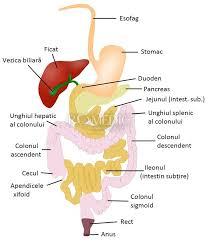


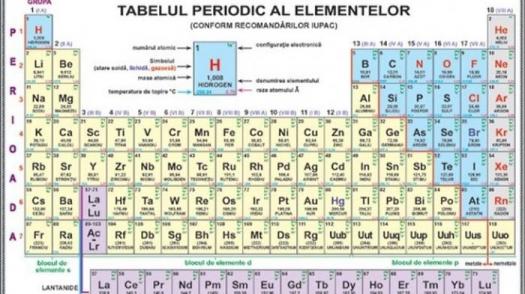
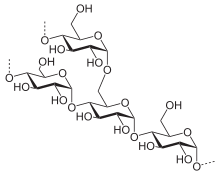
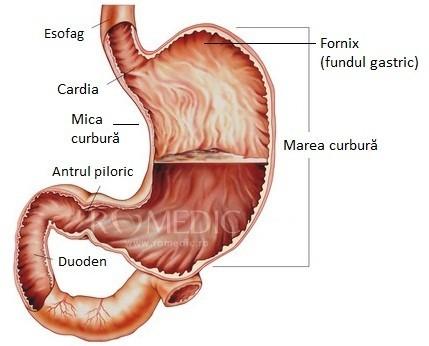
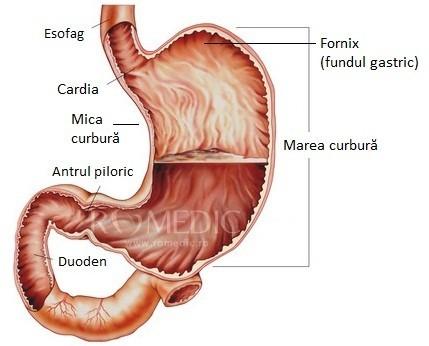
![Pancreasul contine celule endocrine, exocrine si ductale. Celulele exocrine organizate in acini (acín sn [At: DEX2 / Pl: ~e / E: fr aciunus] Mică dilatație, în formă de boabă de strugure, a capătului terminal al unei glande sau al unei bronhiole.) produc 4 tipuri de enzime: peptidaze, lipaze, amilaze si nucleaze care ajuta la digestia proteinelor, lipidelor, glucozelor si acizilor nucleici. Pentru neutralizarea aciditatii gastrice, celulele ductale secreta suc pancreatic (care contine HCO3+)zilnic in cantitate: Pancreasul contine celule endocrine, exocrine si ductale. Celulele exocrine organizate in acini (acín sn [At: DEX2 / Pl: ~e / E: fr aciunus] Mică dilatație, în formă de boabă de strugure, a capătului terminal al unei glande sau al unei bronhiole.) produc 4 tipuri de enzime: peptidaze, lipaze, amilaze si nucleaze care ajuta la digestia proteinelor, lipidelor, glucozelor si acizilor nucleici. Pentru neutralizarea aciditatii gastrice, celulele ductale secreta suc pancreatic (care contine HCO3+)zilnic in cantitate: - ProProfs](https://media.proprofs.com/images/QM/user_images/2531884/1567876004.jpg)

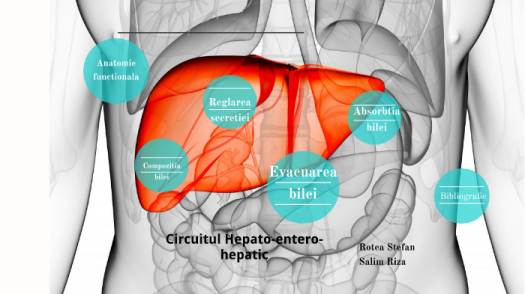
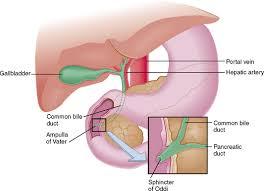
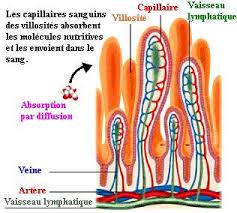
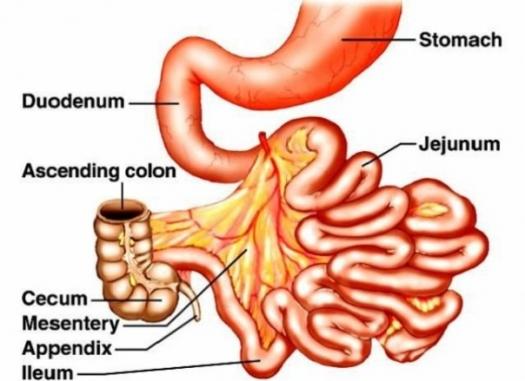

 Back to top
Back to top